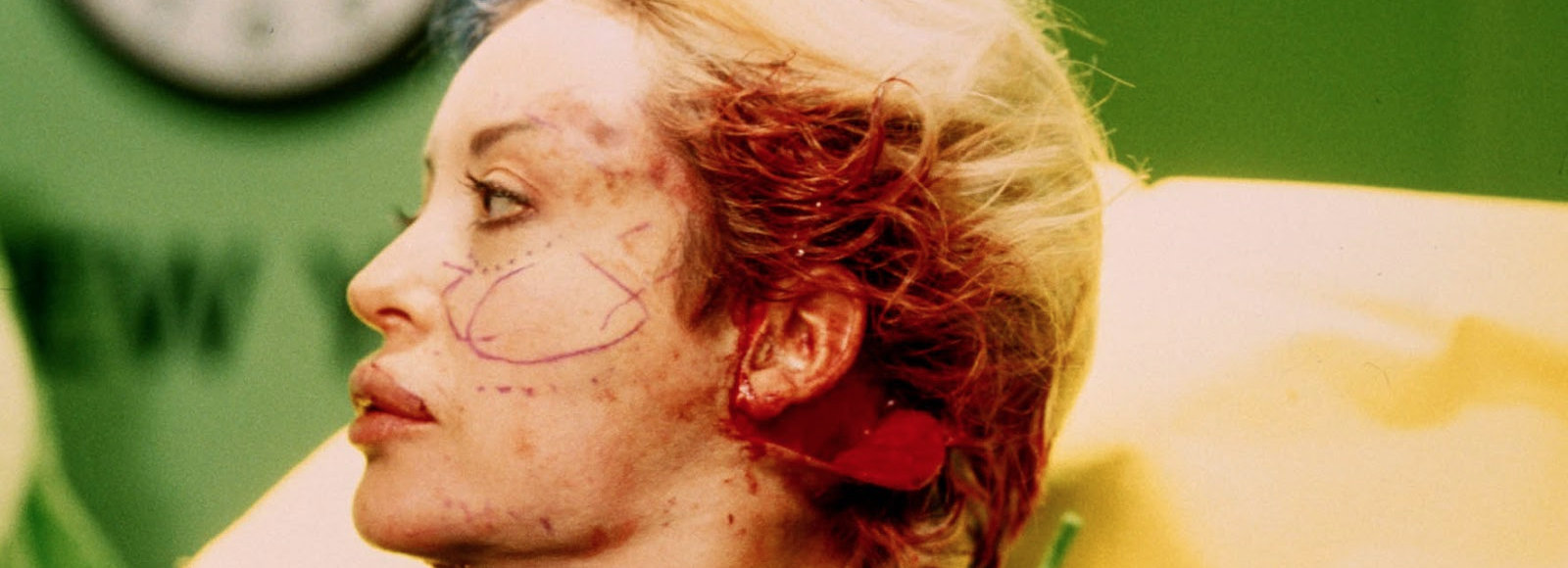
In 1977, the artist known as Orlan staged a work that would come to define the essence of her creative practice. Le Baiser de l’ Artiste – The Artist’s Kiss – was performed in Paris during the Foire Internationale d'Art Contemporain. Dressed in a nude body suit, with a money slot positioned between her breasts and a repository set in her crotch, spectators were invited to pay 5 franc for a kiss. Her daring call to potential suitors was: “Come here, come on my pedestal, the pedestal of the myths – the mother, the whore, the artist.”
The after-effects of this work were significant both personally and professionally. Orlan lost her job teaching art, her loft, and many of the works that she stored there. She also shifted the core of her practice to be about use of her body, saying she wanted “to sculpt [her] own body to reinvent the self”.
Orlan was born Mireille Suzanne Francette Porte in Saint-Étienne. Her career has spanned more than 50 years, beginning with a 1964 photograph she took of herself giving birth to a life-size mannequin and evolving to nine surgery-performances she underwent between 1990 and 1995.
She may have lost her job for performing the artist’s kiss, but it’s the surgeries that have unsettled audiences most and led Orlan to be named one of the most confronting performance artists ever. Influenced by Duchamp, she sees her art as a process of self-transformation through plastic surgery, challenging standards of beauty and the body.
Orlan's fourth surgery performance, Successful-Operation, on exhibit as part of The Patient at UNSW Galleries, was undertaken when she was 44 years old. The procedure takes place in a studio-style operation theatre. On deck are models, translators (English, French, and sign-language), journalists, a film crew, surgeons, and Orlan laying prostrate on a gurney. The five-hour procedure, which altered many parts of her face including having an implant sewn onto her chin to look like that of Botticelli’s Venus, was done while Orlan was conscious and taking interview questions. At one point during the operation she refers to herself as “I as other” and queries when the yellow surgical sheet upon which she lays can be displayed to viewers.
Some have described Orlan as mad, stating that the two elongated protrusions she had surgically attached to her brow with the aim of looking like the Mona Lisa actually make her a monster. Orlan says (in reference to all the surgery-performances), “The idea was to bring about ‘difference’ and that’s the acceptance of difference and how it is looked upon. That is what I am interested in… I always tried in my work to break down barriers between sexes and genders, generations and artistic practices. Before I used to say that I was against all discrimination. But now I say – I am feminist, neo feminist, post-feminist, and alter feminist. ”
Orlan’s Successful-Operation can be seen at UNSW Galleries as part of The Patient until 6 August.
